7 Stir-Fry Mistakes To Avoid
Stir-Fry is absolutely quintessential in Asian cuisine. A good bowl of stir-fry is not only super delicious and appetizing but also a quick way to get dinner on the table fast. Besides the endless flavor and ingredient combinations, stir-fry meals are very dear to my heart as they remind me of my family back home.
Learning how to master stir-fry is certainly not rocket science, but it does require mastering a few fundamentals. Anyone can make a good restaurant-quality stir-fry if they avoid the 7 mistakes below. Read on to learn how to fix the 7 common mistakes made by home cooks.
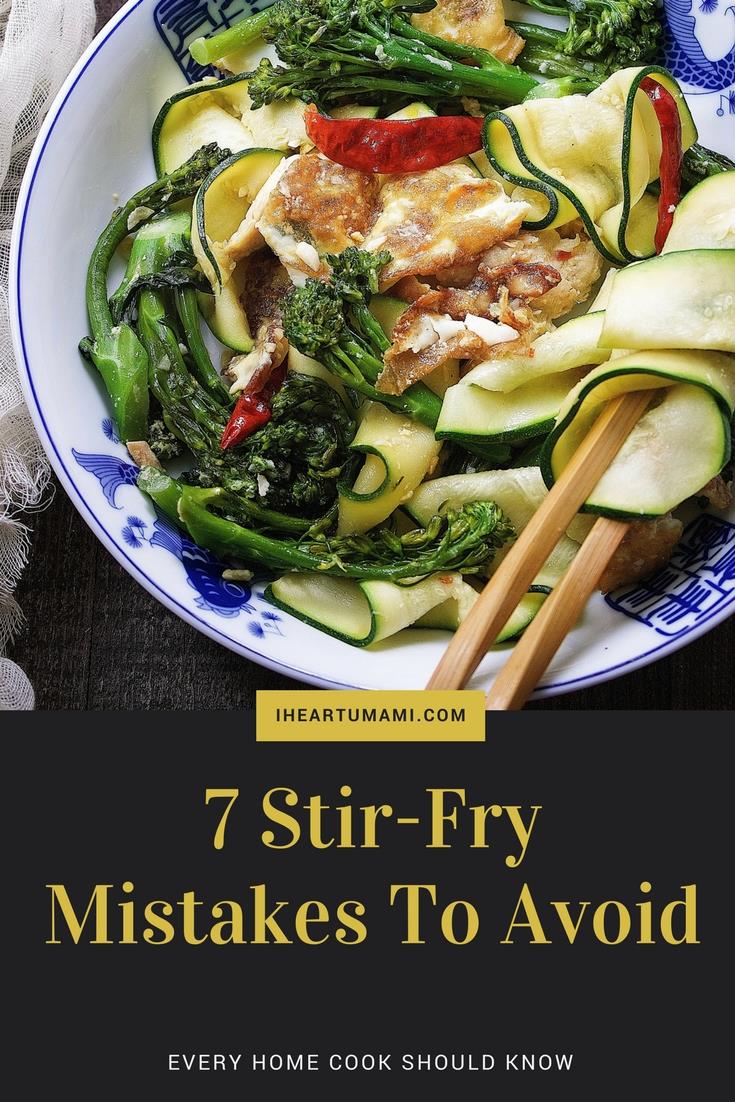
1. Using the wrong type of pan/skillet
Over the years I have come to love using stainless steel skillets, especially for stir-fry dishes. As of the publication of this article, I don’t own a wok. Part of the reason is that most modern (and western) stoves, whether gas ranges, coils, or glass cooktops, are designed for flat bottom cookware.
A traditional round bottom wok does not sit well on a flat stove. The heat concentrates on the bottom end of the wok and it’s difficult to get even heat throughout the entire wok like the picture below where the wok sits in flame up to it’s wall/edge. Simply put it’s a mismatch of surfaces.
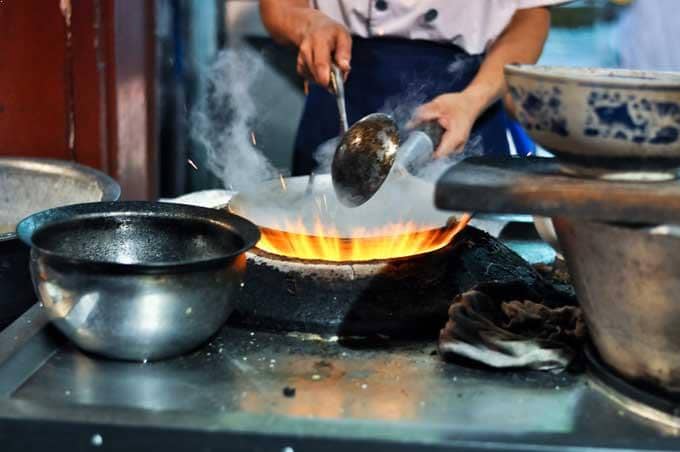
Now there are flat bottom woks available on the market but personally I prefer a wider flat bottom like stainless steel skillet or stir-fry pans. I used to dislike using stainless steel because no matter what I did food stuck to the skillet. By complete coincidence, I discovered that the trick to turn your stainless steel into temporarily non-stick (i.e. less likely to stick) is pre-heating the skillet really really well without oil.
Depending on the thickness of your skillet, preheat it over low to medium-low heat for about 4-5 mins (could be longer or shorter depending on the thickness of the material) until it feels like a hot plate. This creates a temporary sear to the skillet, making it temporarily non-stick. If your skillet does not have a heat resistant handle please be careful and use heat resistant gloves.
Stainless steel gives a nice and even heat that’s perfect for quick sear and saute. Meat and veggies maintain juiciness and crunchiness. Cast iron is another great choice here but it weighs a ton more, making it more difficult to shake and toss the skillet.
Bottom line: When using a stainless steel skillet, preheat it really well (but not to a smoke point) over low to medium-low heat without oil. This will create a temporary non-stick surface that makes the food less likely to stick to the skillet. This brings out our next point. What do you do after that ??
2. Not pre-heating the skillet & Using the wrong oil
By preheating the skillet really well, meat sears evenly and faster, and is thus more juicy. Vegetables stir-fry quicker, so they maintain their crunchy texture. Add the cooking fat (oil) only after the skillet is well-heated, and give the oil a quick swirl to distribute it evenly before adding ingredients.
Avocado oil is a great high-heat cooking oil. It has a neutral flavor, making it perfect to replace canola, seed oils…etc. Personally I also like to use ghee for beef and chicken stir-fry. Coconut oil is perfect when making Thai food. It gives a nice toasted coconut flavor.
Check out my ultimate pantry guide here for everything you need to make Asian-inspired Paleo cuisine.
3. Thick slices of meat
You’ll find that in most of my recipes (if it’s Asian-inspired dishes) the proteins are usually prepared in thin sliced manner. The main reason behind that, in my opinion, has more to do with culinary history in how Asian food is prepared and mixed with some cultural background.
Thin sliced meat allows quick marinating and even seasoning for stir-fry. It creates more surface area and thus yields more golden, crispy sear to each individual slice. Smaller/thinner cuts also help to grab/distribute the sauce better. Culturally speaking, it’s rare to find forks and knives in traditional Asian households so that plays into some elements as well.
Personally speaking I think there’s nothing more delicious than quick seared juicy meat that’s seasoned well with a slightly crisp outer surface (i.e. think your favorite BBQ charcoal-grilled skewers).
Now there’s one single (but simple) trick that you can implement right away to bring your stir-fry to the next level quick. And that brings to our next point…
4. Overcrowding the skillet
Sear the meat in one single layer (and best with some small space in between if possible). If the skillet is over crowded (i.e. you add everything in at once), the protein will release liquid/water and it becomes steaming in the skillet as opposed to that sauteing/stir-frying.
Bottom line: Sear the meat in batches and in a single layer. Do not touch the meat once you place it in a well-heated skillet, until you see that the bottom of the meat is slightly crisped-up; then you can flip it.
If there’s a lot of marinade (liquid), pouring/dripping some off before adding the meat to the skillet will help improve the texture as well.
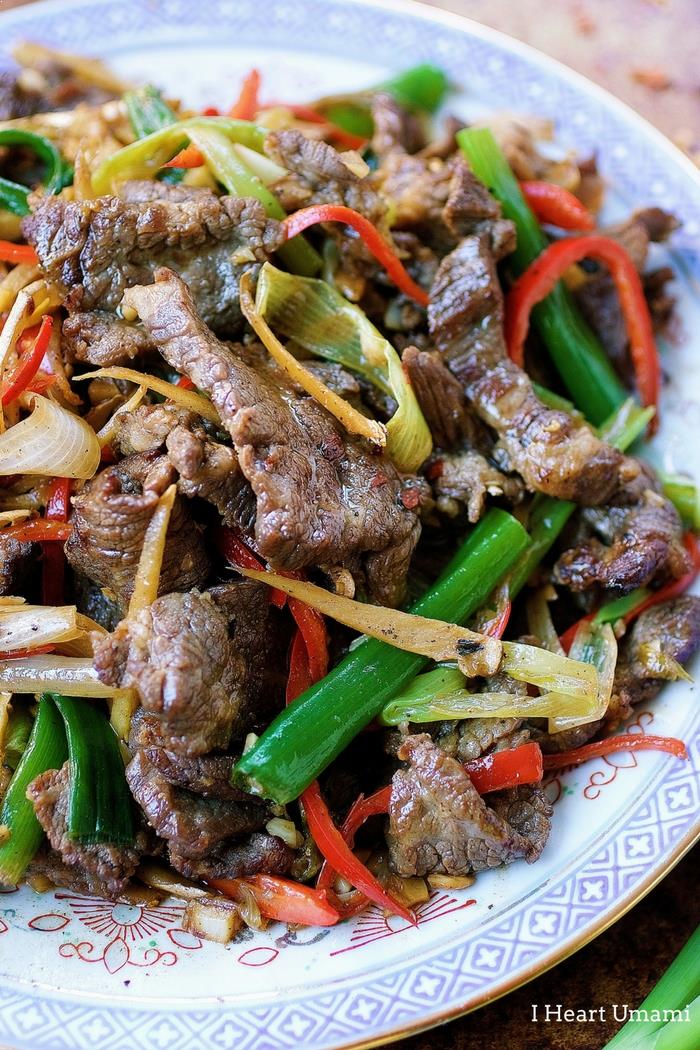
5. No sizzling sound
But how long do you sear the meat per side? I’d say the best answer is to listen. The temperature of the skillet often drops when we just add ingredients in. As a few minutes go by the skillet gets hotter and thus the temperature raises again. You always want to hear a sizzling sound and use that as an indicator that the temperature is at the desired level.
And if it makes you feel more comfortable, for thinly sliced beef, a general rule of thumb is about 3 minutes on the first side, and once seared the flip side will be much faster and shorter: about 1-minute or so. For thinly sliced chicken, the same principle applies but you’ll want to make sure that it’s cooked through if this is the only step you’ll do in making a dish (as opposed to sauteing it again after adding other ingredients (i.e. vegetables).
6. Using a lid instead of a splatter guard
I personally found that using a splatter guard works best for stir-frying in a skillet. It helps prevent oil/grease splatter and allows the moisture evaporates during stir-frying. This echos with our 4th point above – to not steam the meat in water.
7. Adding vegetables that contain a lot of water to the pan
Adding veggies to stir-fry not only adds nutrition and fiber, but also color and texture. But what vegetables to add and when and how to add them is absolutely crucial. A general rule of thumb is to saute the vegetables on the side and, once they are seasoned and slightly softer, add the cooked meat back to the skillet with the vegetables for a quick toss before serving.
Vegetables that contain less water after being cooked are most ideal. For example, broccoli florets, broccolini, carrots, celery, snow peas, sugar snap peas….etc. Check out this Sichuan Dry-Fried Green Bean recipe for a crisp/blistered green bean texture without using tons of oil.
Recipes you can use
Now that you’ve learned some awesome techniques, it’s time to put them into practice! Here are some delicious dishes to get you started, from marinades to stir-fries:
- Chinese Velvet Techniques: Learn how to velvet beef, velvet chicken, or velvet pork for the perfect texture.
- Beef Stir-Fries: Try sha cha beef, black pepper beef, or Chinese pepper steak.
- Chicken Stir-Fries: Cook up chicken napa cabbage stir-fry, Chinese black pepper chicken, or moo goo gai pan.
- Pork Stir-Fries: Make ginger pork stir-fry or Chinese spicy pepper pork.




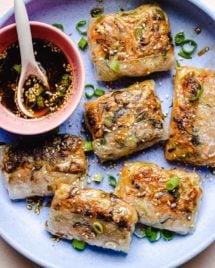
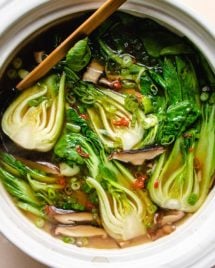



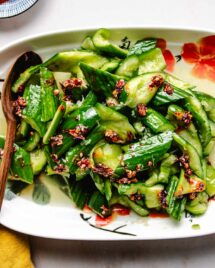
I have made many sub-par stir frys, but your advice has really upped my game. Thank you! Definitely rivals (or maybe even beats) my favorite Chinese take out. ; )
Thanks, Tess. So happy to hear that you found it useful!
Very helpful, thank you! I needed to read this bc I cook often stir fry and now I know how to do it better! Cooking stir fry beef tonight, but I’m going to wrap it with some other veggies in ricepaper. Thank you!?
You are so very welcome !!
This is super helpful! Is it possible to use frozen vegetables directly in a stir fry? Or should they be defrosted and drained first? Thanks.
Hi JG, Thank you !
I don’t recommend using frozen vegetables for stir-fry or saute use unless it’s a cream based dish like my Paleo Creamed Spinach.
https://iheartumami.com/paleo-creamed-spinach/
If you are looking for crunchy vegetable stir-fry, fresh ones will be the best :))
Timing! I wasn’t happy with the way my stir fry of yours turned out last night. Key NEW advice 1) preheating my stainless a bit longer,then add oil 2)avoid the desire to get all the meat cooked at once hence overcrowding. You are so refreshing!
Thank you, Julie ! Timing is certainly everything ! You got it lady ! :))